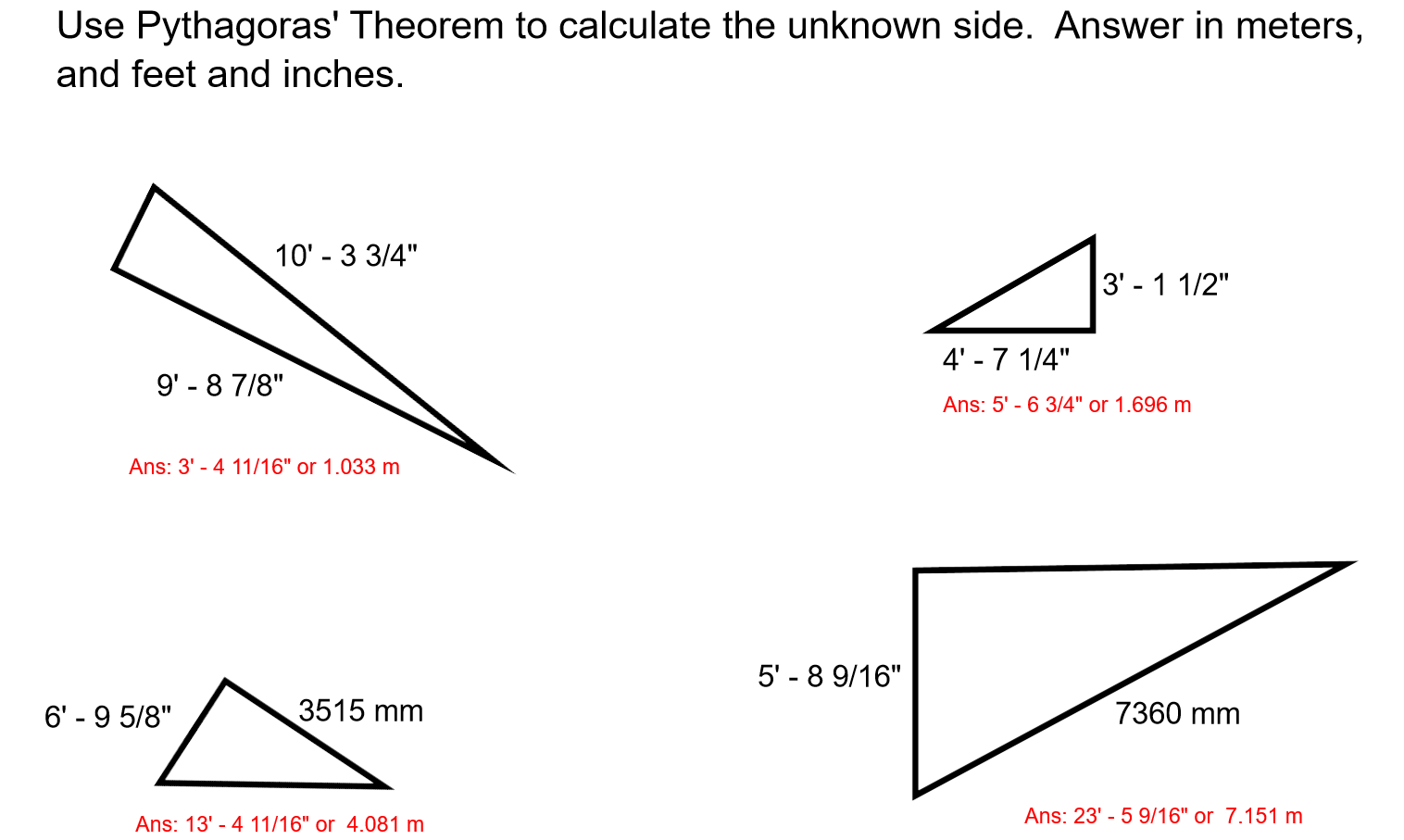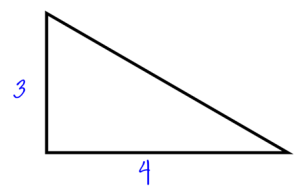Math Checkup: Pythagoras’ Theorem
Another use for converting feet and inches to decimal feet and back is when using Pythagoras’ theorem to calculate a side length of a triangle. If the sides of a triangle are measured in feet and inches, these need to be converted to decimal feet to use Pythagoras’ theorem.
In a right angle triangle, the “legs” are labeled a or b, it doesn’t matter which. The hypotenuse (longest side opposite the right angle.)
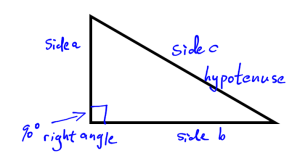
Pythagoras theorem has two forms. ![]() is used when finding the hypotenuse. The other form,
is used when finding the hypotenuse. The other form, ![]() is used when finding the length of a side if you know the length of the hypotenuse.
is used when finding the length of a side if you know the length of the hypotenuse.
Pythagoras’ Theorem Example
Calculate the length of the hypotenuse:
We need to find the length of side c, so we use the formula ![]() . To type this in the calculator, use the following keystrokes:
. To type this in the calculator, use the following keystrokes:
3 ![]() + 4
+ 4 ![]() =
= ![]()
*Note: the “equals” button is very important and often forgotten.
The answer is 5. You can see that the famous 3 – 4 – 5 triangle comes from Pythagoras’ Theorem
Calculate the length of the side:
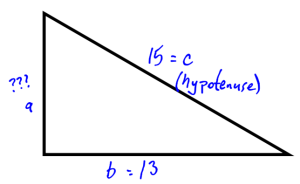
In this case, we know that the hypotenuse is 15. Finding one side requires the formula ![]() .
.
*Note: The hypotenuse (c) needs to be first or you will get a calculator error.
Use the following keystrokes:
15 ![]() – 13
– 13 ![]() =
= ![]()
The answer is 7.48.
Pythagoras’ Theorem with Feet and Inches
Calculate the hypotenuse length.
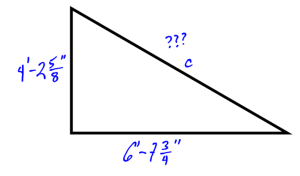
The first step is to calculate the feet and inch measurements to decimal feet. We can use the ![]() and
and ![]() buttons to store these values so we do not need to write anything down.
buttons to store these values so we do not need to write anything down.
| What I am calculating… | What I am thinking… |
| 2 + 5 8 =
12 = + 4 = |
Convert 4’ – 2 5/8” to decimal form. |
| Store this value in the calculator so you don’t need to write down, and all the decimals are used. | |
| 7 + 3 4 =
12 = + 6 = |
Convert 6’ – 7 ¾” to decimal form. |
| Optional: store this number in the second memory spot in your calculator | |
| Perform Pythagoras’ Theorem as in previous example. The answer will be in decimal feet. (8.7325…) | |
| 8’ – 8 13/16” | Convert the answer in decimal feet to feet and inches. |
Pythagoras’ Theorem Exercise Set 1
